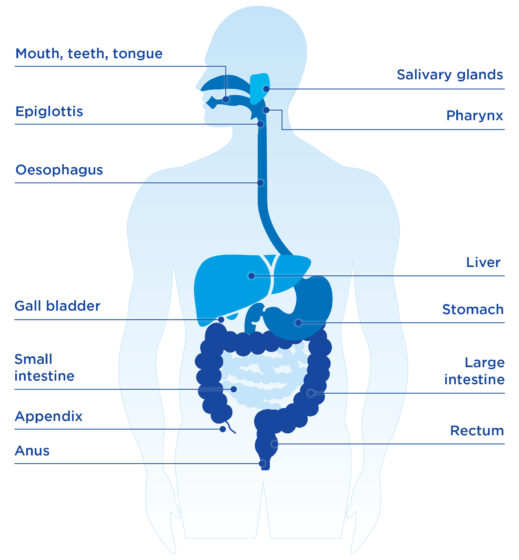Understanding your child’s digestive system

Key points
- The digestive system is made up of the digestive tract and other organs that help the body break down and absorb food and nutrients
- The terms stomach and tummy are generally used to mean the same thing
- Gut health refers to the function and balance of bacteria across the entire gastrointestinal or digestive tract
You might read lots of articles about your baby’s tummy, stomach, gut, gut flora and gut microbiota, and wonder what it all means. “Are they all the same thing?” you might ask yourself. Let’s break it down and make it easier to understand.
Back to basics: the digestive system explained
Your digestive system breaks down the food you eat into nutrients such as proteins, fats and carbohydrates. These nutrients can then be absorbed into your bloodstream and used as needed for energy, repair and growth. Unused materials are discarded as faeces (or stools).
The digestive system is made up of the digestive tract and other organs that help the body break down and absorb food and nutrients.
What is the digestive tract?
Your digestive tract is a long, twisting tube that starts at your mouth, and then involves your oesophagus, stomach, small intestine, large intestine and anus. The digestive tract is also referred to as the gastrointestinal tract. You might also hear the term gastrointestinal abbreviated as GI.

What is the difference between stomach and tummy?
The terms stomach and tummy are generally used to mean the same thing. The stomach or tummy is just one piece of the digestive or gastrointestinal tract. The stomach is located between the oesophagus and the small intestine.
Food travels from the oesophagus into the stomach. The food is then digested by acids and enzymes which are secreted by the stomach, much like a concrete mixer, churning and mixing food to enhance digestion. Once the food is digested it passes from the stomach to the small intestine.
What are gut flora and gut microbiota?
The terms gut flora and gut microbiota can be used interchangeably. Each refers to the community of microorganisms (e.g bacteria) that lives in the digestive or gastrointestinal tract. Having a diverse gut flora means having lots of different microorganisms.
What does gut mean?
When the term gut is used, it is important to look at the context to decide what it might be referring to. Most accurately, it refers to the entire digestive or gastrointestinal tract. When you hear ‘gut health’, it should be referring to the function and balance of bacteria across the entire gastrointestinal or digestive tract.
We’ve tried to help you understand what can be a very complex subject. For more information, or just a one-on-one chat, our Careline is available to help.



